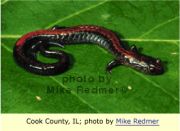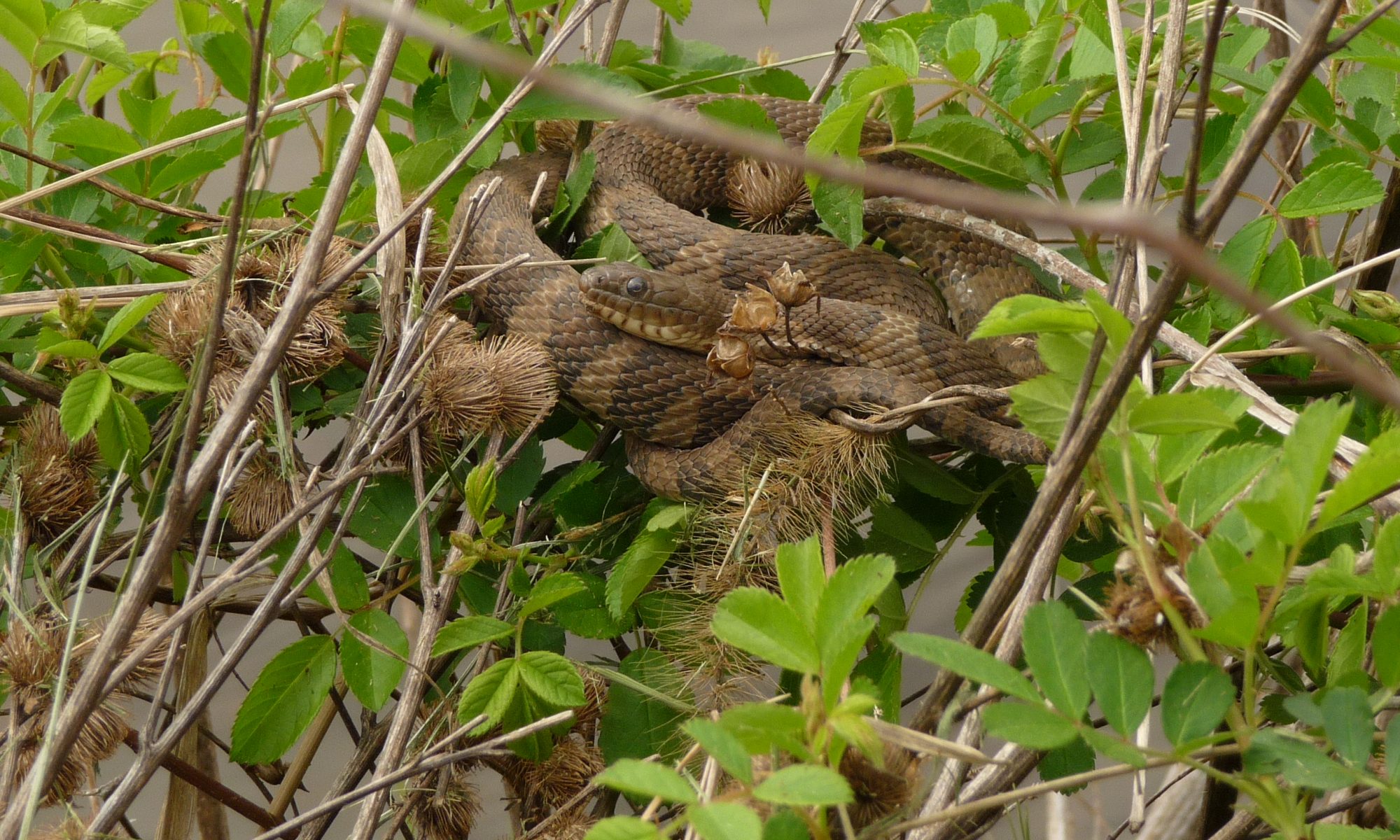Plethodon cinereus (Green, 1818)

Key Characters: 18-20 costal grooves; “salt and pepper” belly without orange marks.
Similar Species: Four-toed Salamander, juvenile Spotted Dusky Salamander, Northern Zigzag Salamander. See Key to Adult and Larval Salamanders of Illinois for help with identification.
Subspecies: In the past, three subspecies were recognized; P. c. cinereus (red-backed salamander), P. c. serratus (Ouachita red-backed salamander), and P. c. polycentratus (Georgie red-backed salamander). P. c. serratus was elevated to species status and P. c. polycentratus was synonymized with P. c. serratus. Therefore, Smith (1961) used the trinomial, P. c. cinereus as it was the only form known from Illinois.
Description: A dark, slender salamander (up to 11 cm TL) with straight-edged reddish stripe on back. Belly mottled or dotted black and white but never has orange marks around bases of front legs. Costal grooves 18-20. Legs small and short, toes of adpressed limbs separated by 4-9 costal folds. Some proportion of individuals (up to 97% in Crawford County, but averaging less than 35% elsewhere) lack the back stripe and are uniformly dark gray to black (lead phase).
Habitat: Terrestrial. Found in forests under logs, bark, sticks, and stones.
Natural History: Completely terrestrial with no larval stage. Feeds on worms, small insects, and other arthropods. Eight to ten yellowish eggs are laid in a cluster under rocks, in rotten logs and tree stumps, or under moss or tree bark. Female guards eggs until they hatch into tiny juveniles in late summer. Hatchling may have a yolk sac and tiny gills for a day or two.
Status: Reaches western edge of range along the eastern forest/prairie border of Illinois. Very rare in northeastern counties because of habitat loss. Remains relatively common elsewhere.
Etymology: Plethodon – pletho (Greek) for crowd, multitude, fullness; odon (Greek) tooth; cinereus – (Latin) ash-colored, gray
Original Description: Green, J. 1818. Descriptions of several species of North American Amphibia, accompanied with observations. Journal of the Natural Academy of Sciences, Philadelphia. 1(1):348-359.
Type Specimen: Not stated, but ANSP 1232-34 are considered syntypes (Highton, 1962, Bull. Florida State Mus., Biol. Sci., 6: 286).
Type Locality: “New Jersey”
Original Name: Salamandra cinerea Green, 1818
Nomenclatural History: Originally described in the genus Salamandra, placed in the genus Plethodon by Tschudi (1838, Classif. Batr.: 92). Other names that have been used for this species in the Illinois literature include Salamandra erythronota Rafinesque, 1818 (Sci. J., New York, 1: 25) and other combinations; Plethodon erythronotus, P. e. cinerea, P. e. erythronota.


